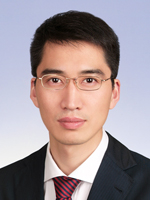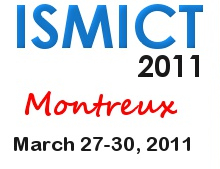Go to
Qiang Tan
 Associate Professor
Associate Professor
Shanghai Lung Tumor Clinical Medical Center
Shanghai Chest Hospital, China
Principle and Advantages of “In vivo Bioreactor” in Tissue Engineered Trachea Reconstruction
In this study we pioneer a concept of “in-vivo bioreactor”, defined as the design of a perfusion system inside biodegradable scaffold, and test its advantages in the revascularlization and reepithelialization processes of tissue engineered trachea first in vitro.
Tissue engineered trachea remains a hot topic in trachea replacement research. At the very beginning, many scientists were falsely led to take it no more than developing a tubular cartilage tissue. Later animal examinations demonstrated the importance of an intact epithelial line preventing the in-growth of granulomatous tissue that leads to fatal airway obstruction. Previous studies demonstrated that epithelial cells have better survival chances on a well vascularized wound surface, a clear proof that revasularization is the essence of reepithelialization.
Such being the case recently in our lab during the research on the reconstruction of tissue engineered trachea we advance a novel concept of in-vivo bioreactor which was defined as: design of perfusion system inside scaffold. Contrast to traditional bioreactor, which immerse scaffold seeded with cells inside perfusion medium, we plan to manufacture a connective pipe system inside the scaffold where medium flow and permeate to scaffold just like normal blood stream flow inside capillary net and perfuse tissues. As it has been proved difficult to successfully simulate an in-vivo regenerative environment in-vitro, the tissue engineered trachea with its integrated perfusion system offer the opportunity to be implanted as soon as possible to leverage on the recipient’s regenerative capabilities. Thus, the recipient serves as her own bioreactor for the maturation of tissue engineered trahea and that is how we are inspired to name our design “in-vivo bioreactor”. To avoid the coagulation-related problems, the perfusion system will be connected to two extracorporeal pumps instead of being directly anastomosed to the recipient’s circulation system. One pump will deliver medium while the other drains the waste. Like a heart-lung machine widely used in cardio operations, this in-vivo bioreactor is supposed to work as an “artificial heart” to the tissue engineered trachea until normal revascularization is established. Further advantages of this in-vivo bioreactor design include the possibility of continuous or intermittent cell seeding, the delivery of growth factors to improve the functional integrity of newly implanted tissue engineered prostheses.
About the speaker:
Qiang Tan received his degree in medicine from the Shanghai Medical University, China in 1994; his masters degree from Shanghai Fudan University in 2005 and his MD from the University of Zurich in 2007. He has been an associated professor of thoracic surgery at the Shanghai Lung Tumor Clinical Medical Center and Vice Director of Shanghai Chest Hospital Regenerative Medicine Lab since 2008.
Dr. Tan is a veteran thoracic surgeon with over 15 years clinical experience. Since he first started in the field of tissue engineering in 1999, Dr. Tan has done many research on tissue-engineered trachea and bone, and is renowned as a pioneer in the application of tissue engineering techniques to thoracic and cardiovascular surgery in China. Dr. Tan participated in the initial establishment of product criteria/standards for tissue-engineered bone in the industry in China. Thus he is quite familiar with the tissue-engineered products application scheme in China and is well connected in the industry. Used to be a tissue engineering project leader in the University Hospital of Zurich in Switzerland, Dr. Tan pioneered the “in-vivo bioreactor” concept that combines the in-vitro cell-scaffold three dimensional culture step with in-vivo prosthesis regeneration step. Treating the patient as the bioreactor for his own tissue engineered organ, “in-vivo bioreactor” design accelerate the re-vascularization and re-epithelialization processes which remains the main obstacles for large tissue engineered tissue clinic application.
Secondary navigation
- EPFL Workshop on Logic Synthesis and Emerging Technologies
- Luca Amaru
- Luca Benini
- Giovanni De Micheli
- Srini Devadas
- Antun Domic
- Rolf Drechsler
- Pierre-Emmanuel Gaillardon
- Jie-Hong Roland Jiang
- Akash Kumar
- Shahar Kvatinsky
- Yusuf Leblebici
- Shin-ichi Minato
- Alan Mishchenko
- Vijaykrishnan Narayanan
- Ian O'Connor
- Andre Inacio Reis
- Martin Roetteler
- Julien Ryckaert
- Mathias Soeken
- Christof Teuscher
- Zhiru Zhang
- Symposium on Emerging Trends in Computing
- Layout synthesis: A golden DA topic
- EPFL Workshop on Logic Synthesis & Verification
- Luca Amaru
- Luca Benini
- Robert Brayton
- Maciej Ciesielski
- Valentina Ciriani
- Jovanka Ciric-Vujkovic
- Jason Cong
- Jordi Cortadella
- Giovanni De Micheli
- Antun Domic
- Rolf Drechsler
- Henri Fraisse
- Paolo Ienne
- Viktor Kuncak
- Enrico Macii
- Igor Markov
- Steven M. Nowick
- Tsutomu Sasao
- Alena Simalatsar
- Leon Stok
- Dirk Stroobandt
- Tiziano Villa
- Symposium on Emerging Trends in Electronics
- Raul Camposano
- Anantha Chandrakasan
- Jo De Boeck
- Gerhard Fettweis
- Steve Furber
- Philippe Magarshack
- Takayasu Sakurai
- Alberto Sangiovanni-Vincentelli
- Ken Shepard
- VENUE
- Panel on Circuits in Emerging Nanotechnologies
- Panel on Emerging Methods of Computing
- Panel on The Role of Universities in the Emerging ICT World
- Panel on Design Challenges Ahead
- Panel on Alternative Use of Silicon
- Nano-Bio Technologies for Lab-on-Chip
- Functionality-Enhanced Devices Workshop
- More Moore: Designing Ultra-Complex System-on-Chips
- Design Technologies for a New Era
- Nanotechnology for Health
- Secure Systems Design
- Surface Treatments and Biochip Sensors
- Security/Privacy of IMDs
- Nanosystem Design and Variability
- Past Events Archive
Downloads
Presentation Slides:
SPIMD flyer including workshop schedule (250 KB pdf)
EPFL campus map (2.3 MB pdf)
Registration
Registration is free of charge. Please send an e-mail with subject line "SPIMD workshop registration" to anil.leblebici@epfl.ch to register. Make sure to state your full name and affiliation.


